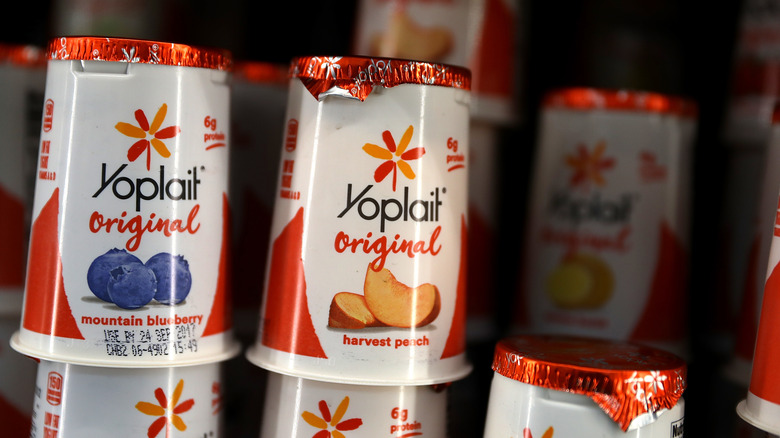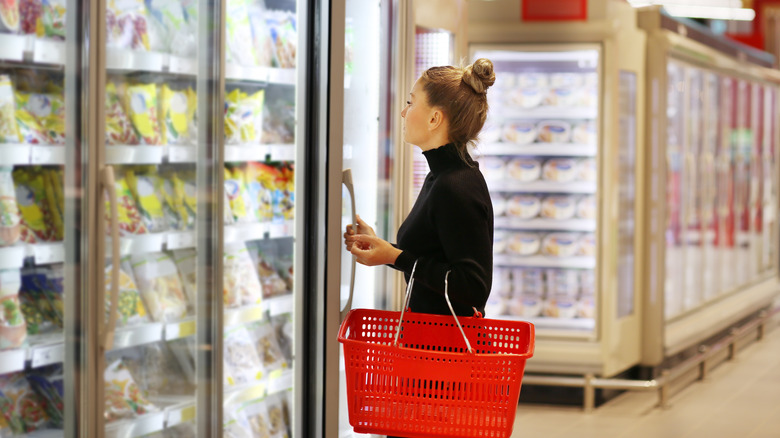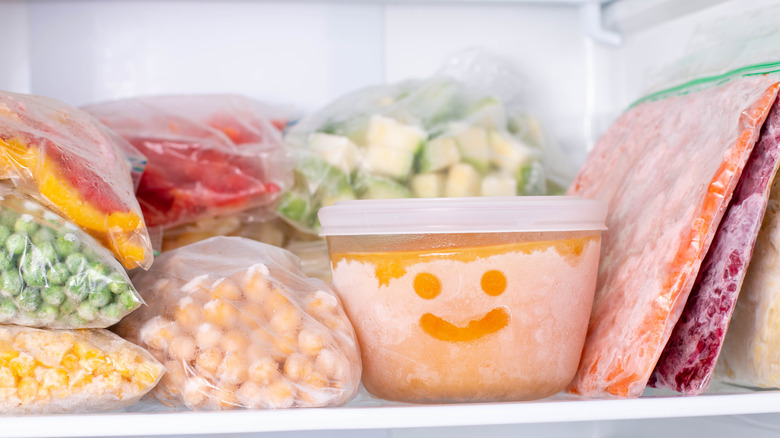Yogurt And Frozen Foods Are The Latest Victims Of Inflation
By now, you're probably all too aware of record-breaking inflation, which reached a 40-year high in 2022. Supply chain issues, global conflicts, labor shortages, and probably a fair amount of price gouging have pushed prices of everyday items at the grocery store to sometimes double-digit increases, and the numbers have been slow to come down. Record-breaking inflation might be cooling off a little bit, but that hasn't trickled down everywhere. While some items have come down in price, others are still on the way up. The latest products to be affected by inflation? Yogurt and frozen foods.
If you shop for yogurt when planning breakfast, you've probably noticed that your routine has gotten significantly more expensive. According to the newest economic study report by the Catalina Shopping Basket Index, yogurt prices in the United States and Europe have increased 18% in the first quarter of 2023. The next biggest increase is the category of frozen food, which increased 17%, and frozen vegetables, specifically, rose 16%.
Why is inflation so high?
These two specific categories have seen such big price-increases because of the same market disruptions we've been hearing about for the past couple of years, according to Catalina.
"A number of factors have been driving up prices in Europe and the United States," explains Sean Murphy, the chief data and analytics officer at Catalina, "including the war in Ukraine, lingering supply chain disruptions, and rising aluminum, ingredient, labor, and energy costs."
The inflation of yogurt prices may be related to the high price of milk, which rose dramatically in 2022, due to higher feed- and labor-costs, according to U.S. News & World Report. Frozen-food prices, on the other hand, may be a victim of the category's own popularity. Supermarket News reports that consumers continue to buy frozen food despite its inflated costs, which means suppliers can continue to charge more.
There are alternatives to yogurt and frozen foods, however, if you're watching your budget. If yogurt is a staple item in your house for the probiotics, try looking for lower-cost alternatives like Kefir, kombucha, and fermented foods such as sauerkraut and miso. If you've got to have that yogurt texture, shop around for yogurts made with dairy alternatives like coconut cream or silken tofu. It can seriously pay to pick up alternative milks at the Dollar Store, so check the coolers while you're there to see if they have any affordable, alternative yogurts, as well.
Freeze your own food to beat inflation
If you rely on frozen food a lot, but the prices are getting too high, the good news is: Freezing most foods is incredibly easy. When it comes to produce, you'll even get much better tasting frozen veggies than the mass-produced versions, because you can get them fresh while they're in season.
The key to freezing your own fruits and vegetables is to prep them like the big companies do. The first step is to cut them up into bite-sized pieces. Next, if you're freezing veggies, blanch them in boiling water for a couple of minutes, then chill them down in an ice bath (you don't need to do this for fruit). Then, spread them out on a sheet pan so that there's one layer and pop it in the freezer for an hour or so. Once the produce is frozen, scoop it all into a freezer bag, write a label and date on that bag, and you're good to go.
Try using the same sheet-pan method for freezing grains like rice, quinoa, and barley. You can also save money by buying family-size packages of meat and freezing them in small batches. Casseroles like macaroni and cheese, as well as soups, freeze well, too. By doing a little meal prep, you can skip the high prices.


